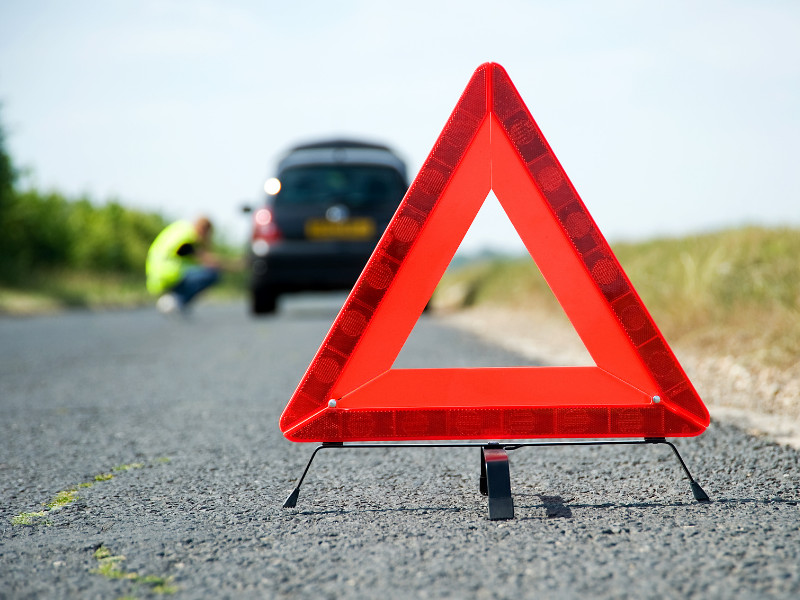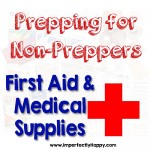You just never know when an emergency will happen. Being prepared for the unexpected could sometimes be the difference between life and death. When it comes to being prepared for emergencies, most people only think about having a well-stocked disaster kit at home.
But what about also thinking about keeping some of those supplies stashed away in your car? If you’re ever caught in a situation where you’re away from home or you need to evacuate quickly, you’ll be glad you have these items with you. Here are 10 emergency items to keep in your vehicle.
Why Store Emergency Items in Your Car?
There’s simply no telling where you’ll be when a disaster or medical emergency takes place. There’s also a very good chance that it won’t happen while you’re in the comfort of your own home. The emergency supplies that you have stashed away won’t do you much good if you’re away from home.
You don’t want to be caught scrambling around in the middle of the night while gathering emergency items, when you should have already evacuated. It’s a great idea to have several key emergency items tucked away in your vehicle because in most cases, it’s always nearby.
10 Emergency Items to Keep in Your Car
Now that you fully understand the importance of also having emergency items set aside in your vehicle, let’s find out which ones will do you the best for those undesirable situations.
1. First-aid Kit

Unfortunately, bodily injuries are fairly common following a disaster as well as other types of emergencies. Hopefully, it’s nothing more than a few minor cuts or bruises that you’ll run into, but you also need the right supplies for serious injuries just in case. Your first-aid kit should include bandages, antiseptic wipes, gauze, scissors, etc.
2. Flashlight

Sure, your phone’s flashlight will work for a while, but what will you do when you need a light source on the second or third night following your emergency? A flashlight can be very useful if you have a flat tire at night or need to signal for help.
3. Whistle

A whistle can help you attract attention if you’re stranded and need help. Most people assume that they’ll just be able to cry out for help, but you just don’t know what predicament you may be up against and may not have the strength to call out when a search party is nearby. A whistle is very easy to hear, even when it’s blown faintly.
4. Tarp

God forbid that you’re ever forced into a hopeless situation where you have to leave your home forever, but you may need a temporary makeshift shelter until you can come up with something that’s more long-term. A tarp can be used to protect you and your family from the elements when you have to sleep outside.
5. Blanket or sleeping bag

A blanket or sleeping bag can keep you warm if you’re stranded in cold weather. Be sure to have enough blankets and sleeping bags set aside in your trunk for everyone in your family.
You can keep a set of emergency blankets in your car; those take up a lot less space than sleeping bags.
6. Water and non-perishable food

Don’t be left without anything to give your kids when they’re hungry or thirsty following an emergency. You should have at least a few days’ worths of water and food in your car in case you’re stranded or have to evacuate.
7. Map

A map can help you navigate if you’re stranded in an unfamiliar area. It can also help you plan your evacuation route before an emergency takes place.
You want to have a physical map in case your phone navigation / service is not available.
8. Jumper Cables

Jumper cables can come in handy if your battery dies and you need a jump-start. You may also be able to come to the rescue of someone else with their vehicle.
9. Spare tire

When you’re in the middle of an evacuation, a flat tire is not something that anyone should have to worry about. But without a spare tire, your vehicle will be rendered useless, and you’ll be stuck carrying all of your emergency supplies with you until you’re able to find a safe place to find shelter. So, make sure that your spare tire is in good working order so that you can get back on the road quicker.
You may also want to consider having a can of Tire Fix for emergencies.
10. Tool Kit

A tool kit can be useful for changing a tire or making minor repairs. Be sure that you store tools in it such as a hammer, nails, screwdrivers, pliers, a knife, and any other tools that you might think may be useful for you.
How can I put together an emergency car kit on a budget?
If you’re on a tight budget, you can still put together a decent emergency car kit. The most important items to focus on are food, water, and a first-aid kit. You can store non-perishable food items such as granola bars, nuts, and dried fruit in your trunk.
And you should always keep a few bottles of water in your car, even if you’re not planning on going on a long road trip. As for a first-aid kit, you can put one together yourself or purchase a pre-made kit. Be sure to include items such as bandages, antiseptic wipes, gauze, and scissors.
How often should I replace the emergency items in my vehicle?
You should replace the emergency items in your car every six months or sooner if any of them are expired. Make sure you also check your spare tire to make sure that it is properly inflated and in good working order. Always keep a map of the area in your glove compartment so that you can plan your evacuation route before an emergency takes place. And be sure to check your jumper cables to make sure that they’re still in good condition.
These are just a few prepping items you should think about keeping in your car in case of an emergency. When it comes to your non-perishable foods, be sure to rotate them every few months so that the heat doesn’t begin to spoil them.
What are a few other items that people should consider storing in their vehicles in case of emergencies? I’d love to hear from you!





